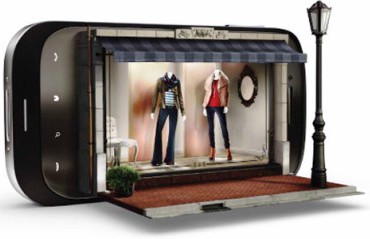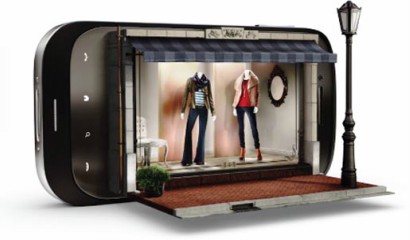Mobile shopping is growing at a rapid pace, but not every app gives shoppers what they are looking for, and fickle customers will easily abandon a brand based on a perception of poor service. A recent study on mobile shopping and mobile customer service shows that consumers want convenience, but feel mobile apps are failing them when they need help. “Even though retailers have started investing in mobile apps, shoppers are often left wanting more,” says John Hibel, Director of Marketing at Contact Solutions, which conducted the study. “When they are forced to switch channels to get the assistance they need, this fractures the brand experience and makes consumers far more likely to abandon shopping carts—and what’s more, they’ll often abandon the brand entirely. Losing shoppers due to a poor mobile experience is a real risk.”
“Even though retailers have started investing in mobile apps, shoppers are often left wanting more,” says John Hibel, Director of Marketing at Contact Solutions, which conducted the study. “When they are forced to switch channels to get the assistance they need, this fractures the brand experience and makes consumers far more likely to abandon shopping carts—and what’s more, they’ll often abandon the brand entirely. Losing shoppers due to a poor mobile experience is a real risk.”
Mobile shopping study findings
The Contact Solutions shopper study “Mobile Spend in 2015” shows mobile has a growing influence on how shoppers feel about a brand in general, and that perception translates into their buying behavior as a whole. The online study polled more than 1,800 adults in the US last November. Key findings include:
Customer care is key to making mobile apps sticky. Without good mobile customer service, consumers grow frustrated and many will even abandon a retailer entirely, not just the retailer’s app, the study concludes. When shoppers need help, they expect to get it immediately and effortlessly. If forced to stop what they’re doing and leave the app to get help, 1 out of 4 shoppers will be likely to not make a purchase with the brand at all.
 Showrooming is rampant, but preventable. The study reports that 27 percent of shoppers prefer to do mobile shopping in the actual brick and mortar store, but 26 percent browse their mobile device in competitor stores. Retailers can thwart showrooming by providing better care in-app care than their competitors.
Showrooming is rampant, but preventable. The study reports that 27 percent of shoppers prefer to do mobile shopping in the actual brick and mortar store, but 26 percent browse their mobile device in competitor stores. Retailers can thwart showrooming by providing better care in-app care than their competitors.
App recommendations help boost the bottom line. In the study, 23 percent of respondents said in-app recommendations would drive them to add more items to their cart and 33 percent said they would spend more time in the app.
Most shoppers have needed help in mobile apps. A full 81 percent of shoppers in the study have needed assistance in a mobile app but only 12 percent used their mobile phone to get it. Why? Because more often than not, mobile customer service is not available. Of those surveyed, almost half said they actively dislike leaving the app to get help.
Mobile is actually more sedentary, and happens in the home. Much of the mobile app experience happens in the comfortable, unrushed environment of the home, with 85 percent of shoppers preferring to shop there via mobile, even if other devices are close.
Deals and discounts still rule, but don’t have to dominate. There are other ways to help brand image and increase repeat customers. 54 percent of shoppers said coupons and discounts would increase desire to be a repeat customer, but easier product comparisons (34 percent), the ability to get help (25 percent), and more ways to pay (29 percent) also help increase repeat business.
Web & mobile customer service continuity
The next generation of mobile apps will need convenient in-app customer care to stave off cart abandonment and build brand loyalty, says Contact Solutions, which just so happens to offer such services to retailers and developers. The company this spring released the latest generation of its patented digital customer engagement platform, called My:Time.
Version 3.0 of My:Time includes a cloud-based engagement platform, SDKs for integrating capabilities into existing native mobile apps and website environments, an upgraded agent desktop portal, and CRM integration. The service aims to place consumers in control of their experience with the ability to message a seller’s representative directly without leaving the seller’s mobile app or branded web experience. Contact Solutions says that unlike traditional web chat, built-in persistence lets customers carry on conversations with the seller across web and mobile platforms at their convenience, with context maintained. That means that customers don’t have to complete the interaction at one time, or repeat themselves if they have to restart the conversation hours or even days later.
The company also recently added a technology feature it calls Adaptive Personalization, which it says can learn from a customer’s behavior and preferences, and adapt accordingly for better service.
You can find out more about My:Time and access the full “Mobile Spend in 2015” shopper study results on the Contact Solutions website.





